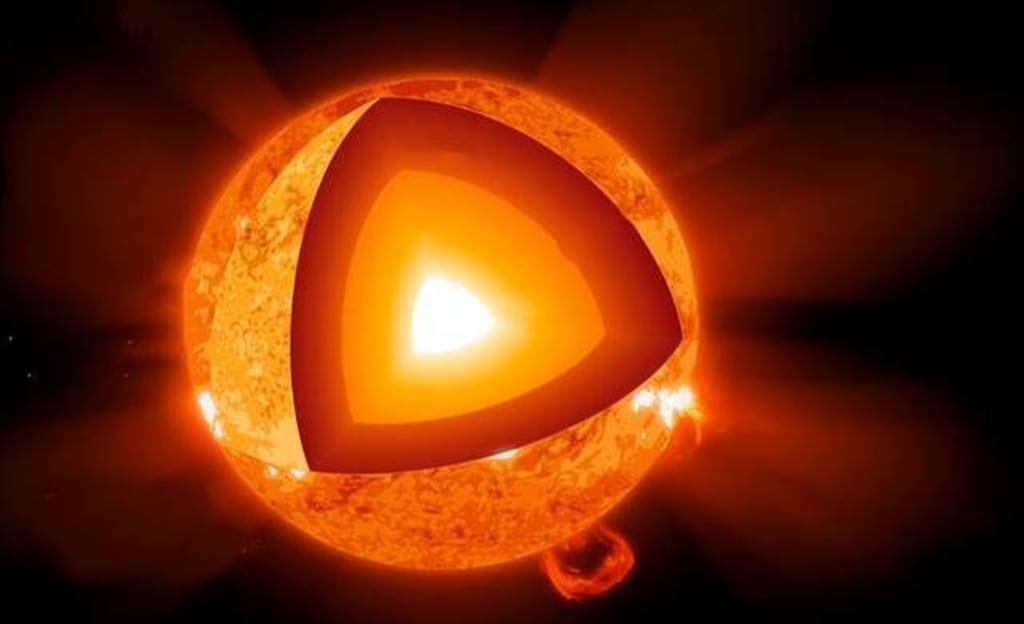The sun is quietly changing, leaving mankind with no more than 5 billion years
The time the sun leaves for mankind

The sun is the source of all things on earth, it is because of the sun's light and heat, the earth can become a vibrant planet, however, the sun is not an eternal existence, with the evolution of the sun, one day, the earth will become no longer suitable for human survival, then the sun left human time how long it?
I believe we should have heard that the sun's life expectancy is about 5 billion years, so it seems that humans still have a lot of time, but the actual situation is not as optimistic as imagined, because the "5 billion years" actually refers to the sun's main sequence star phase remaining time, not the habitable time of the Earth.
The Sun is quietly changing, as it is becoming brighter and brighter and releasing more and more energy. This causes the temperature of the Earth's surface to rise, and when the temperature rises to a certain level, the Earth will no longer be suitable for human survival.
In other words, even if the sun is still in the main sequence star stage, it will also destroy the natural environment on Earth, so the sun left mankind time, simply not 5 billion years, here we look at what this is all about.
In essence, the sun's light and heat are from nuclear fusion reactions, the mechanism of operation can be simply described as the sun will collapse due to its own gravitational force, which will cause the temperature and pressure inside the sun to be elevated, the closer the region to the center of the sun, the higher the temperature and pressure, when a critical value is reached, it will start the fusion reaction.
This shows that only in the region of the Sun's interior closest to its center will fusion reactions occur, and we can refer to this region as the "core reaction zone", where the temperature and pressure at the boundary meet the minimum conditions for initiating fusion reactions.
Nuclear fusion in the Sun is based on the "proton-proton chain reaction", and protons are actually hydrogen nuclei, so we can simply understand that in the "core reaction zone", a large number of hydrogen nuclei will continue to fuse through a series of reactions into helium atomic nuclei, releasing energy.
In addition to heating up the Sun, the fusion energy also has the important function of producing a gravitational collapse against the Sun, which we can call "radiation pressure".

For a start, if its gravity is greater than the "radiation pressure", it will shrink in size, and vice versa, it will expand, and only if its gravity is balanced with the "radiation pressure" can it maintain a stable volume.
Since the temperature and pressure in the solar "core reaction zone" cannot initiate the fusion of helium nuclei, the helium produced by the "proton-proton chain reaction" becomes an impurity, which undoubtedly reduces the energy density of the "core reaction zone". This undoubtedly reduces the energy density of the "core reaction zone".
In this case, the "radiation pressure" decreases, the balance is broken, and the volume of the Sun shrinks, which leads to an increase in the temperature and pressure of the "core reaction zone", which leads to two results.
1. The reaction rate of the "proton-proton chain reaction" will be increased, because the reaction rate of nuclear fusion is very sensitive to temperature, and the reaction rate will be significantly increased if the temperature is slightly increased.
2. The boundary of the "core reaction zone" will expand outward, because the overall temperature and pressure of the "core reaction zone" have increased, which will cause part of the original "core reaction zone" to This causes some of the hydrogen nuclei that were outside the "core reaction zone" and have never undergone fusion to now participate in the fusion.
In this way, the "radiation pressure" generated in the "core reaction zone" is enhanced and once again forms a new equilibrium with gravity, and in this new equilibrium, the "core reaction zone In this new equilibrium, the "core reaction zone" actually expands, and as this process continues, the Sun continues to brighten.
From the perspective of our human history, this change in the sun is very slow and can be said to be quietly changing, but if the period is stretched long enough, this change cannot be underestimated.
According to scientists' estimates, 4 billion years ago, the sun's brightness was only about 70% of what it is now, and in a billion years, the sun's brightness will increase by another 10% on top of what it is now, and by that time, the average temperature of the earth's surface will reach 47 to 70 degrees Celsius, and the oceans will have evaporated as a result.
Obviously, in such a harsh natural environment, human beings can not survive, so it can be said that the time left by the sun for human beings is not 5 billion years at all, at most only 1 billion years.
Of course, the above does not take into account the impact on human beings, it is conceivable that, although human beings can not do anything about the changes in the sun, if human civilization can develop a billion years, then the level of human technology should be able to solve this crisis, and then again, to the Earth to add a giant device to block the sun should be able to, right?
About the Creator
Deljewitzki
Science is no national boundaries, but scholars has his own country






Comments
There are no comments for this story
Be the first to respond and start the conversation.